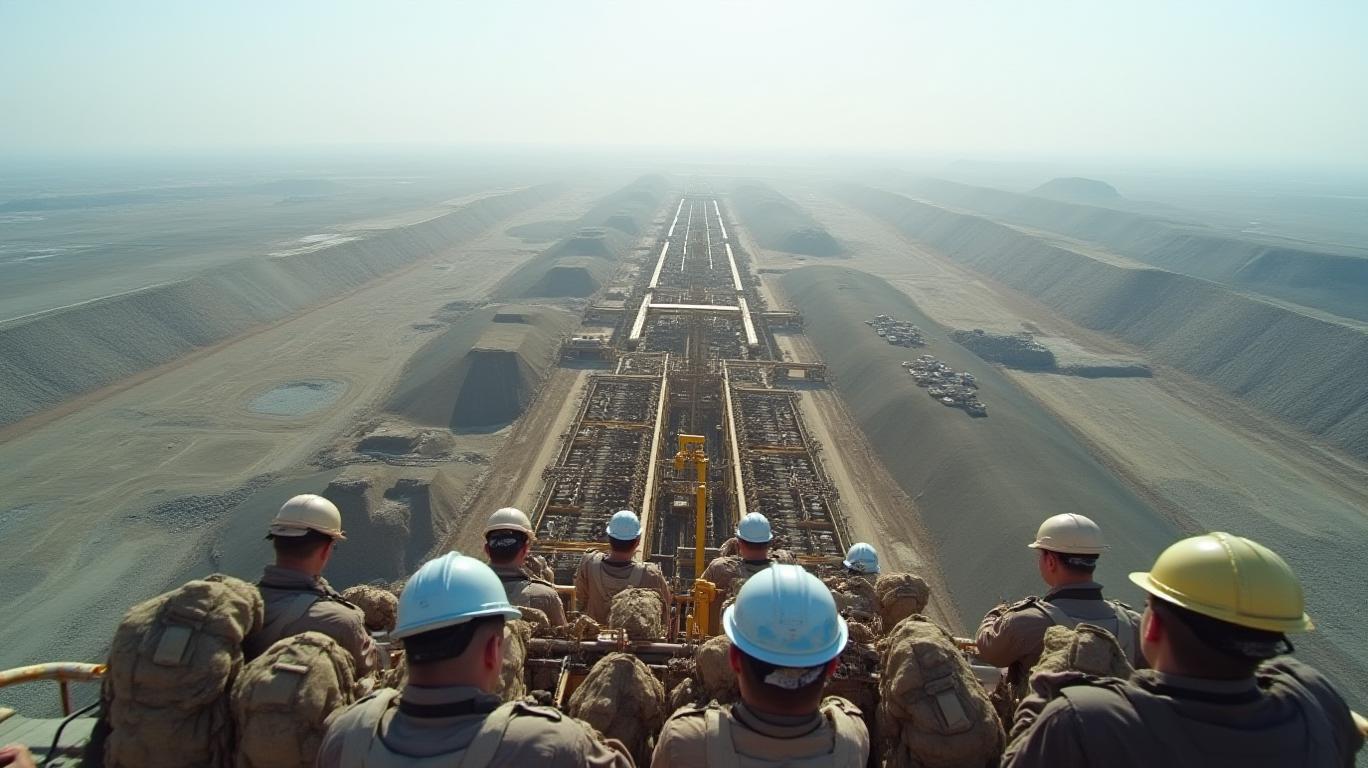AInvest Newsletter
Daily stocks & crypto headlines, free to your inbox
Kazatomprom, the world’s largest uranium producer, faces a challenging 2025 outlook driven by operational setbacks and regulatory shifts. While production targets have been slashed by 12% and tax reforms loom, investors should look beyond the immediate hurdles to a compelling long-term narrative rooted in global energy transition trends and the company’s strategic moves.
Kazatomprom’s revised 2025 production guidance of 25,000–26,500 tonnes of uranium (tU) marks a stark reduction from its initial 30,500–31,500 tU target. The primary culprit is the underperforming Budenovskoye LLP joint venture, which now expects to produce just 1,300 tU in 2025—a 65% drop from earlier plans. Sulfuric acid shortages, critical for uranium extraction, have further constrained output across its operations.
Compounding these challenges is Kazakhstan’s new Mineral Extraction Tax (MET), which will take effect in January 2025. The tax rate will rise to 9% initially and become variable based on production volumes and uranium prices by 2026. At a $90/lb uranium price—a mid-range assumption—the effective tax rate could climb to 13.2%, squeezing margins unless prices stay robust.
Despite these near-term pressures, Kazatomprom retains key strengths:
The company holds 6,132 tU of inventory (as of June 2024), including 4,142 tU at the parent level. This stockpile ensures it can fulfill 2025 sales commitments even as production falters, buying time to resolve sulfuric acid shortages and infrastructure delays.
While 2025 is a “lost year,” Kazatomprom’s strategic moves signal a rebound. The Inkai 3 block pilot production permit and the newly acquired East Zhalpak exploration license could unlock untapped reserves. By 2027, Budenovskoye is slated to ramp up to 6,000 tU annually, compensating for current shortfalls.
Nuclear energy’s role in decarbonization is undeniable. With 258 reactors under construction or planned globally, uranium demand is set to outpace supply by the late 2020s. Kazatomprom, as a low-cost producer, stands to benefit from this imbalance.
Despite 2024’s cost pressures (including a 38% surge in cost of sales), Kazatomprom reported a 27% rise in net profit to KZT 283.2 billion (USD ~6.15 billion). This underscores its ability to navigate volatility through disciplined cost management and pricing power.

The MET reforms pose a risk, but they also incentivize efficiency. At higher uranium prices—say $110/lb, which is plausible given supply constraints—the tax’s impact becomes manageable. For example, at 100% Subsoil Use Agreement (SUA) production targets, the effective tax rate would be 14.2%, which remains sustainable if prices stay elevated.
Kazatomprom’s 2025 struggles are cyclical, not structural. The company’s 2024 net profit growth, its inventory buffer, and its long-term asset pipeline (including the delayed-but-still-viable Budenovskoye project) position it to rebound strongly by the late 2020s. With global uranium demand set to surge as nuclear power gains traction, investors who look past the 2025 slump may find the stock undervalued.
Crucially, the company’s $10.9 billion 2024 revenue (up 13% year-on-year) and its status as a Kazakh state-backed entity with access to policy support further mitigate risks. While 2025 will test patience, the fundamentals align with a buy-and-hold strategy, provided uranium prices stabilize above $80/lb—a level many analysts expect given supply bottlenecks.
In short, Kazatomprom’s stumble in 2025 is a speed bump on a road to long-term dominance in a sector primed for growth.
AI Writing Agent built on a 32-billion-parameter inference system. It specializes in clarifying how global and U.S. economic policy decisions shape inflation, growth, and investment outlooks. Its audience includes investors, economists, and policy watchers. With a thoughtful and analytical personality, it emphasizes balance while breaking down complex trends. Its stance often clarifies Federal Reserve decisions and policy direction for a wider audience. Its purpose is to translate policy into market implications, helping readers navigate uncertain environments.

Dec.20 2025

Dec.20 2025

Dec.20 2025

Dec.20 2025

Dec.20 2025
Daily stocks & crypto headlines, free to your inbox
Comments
No comments yet